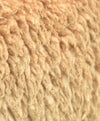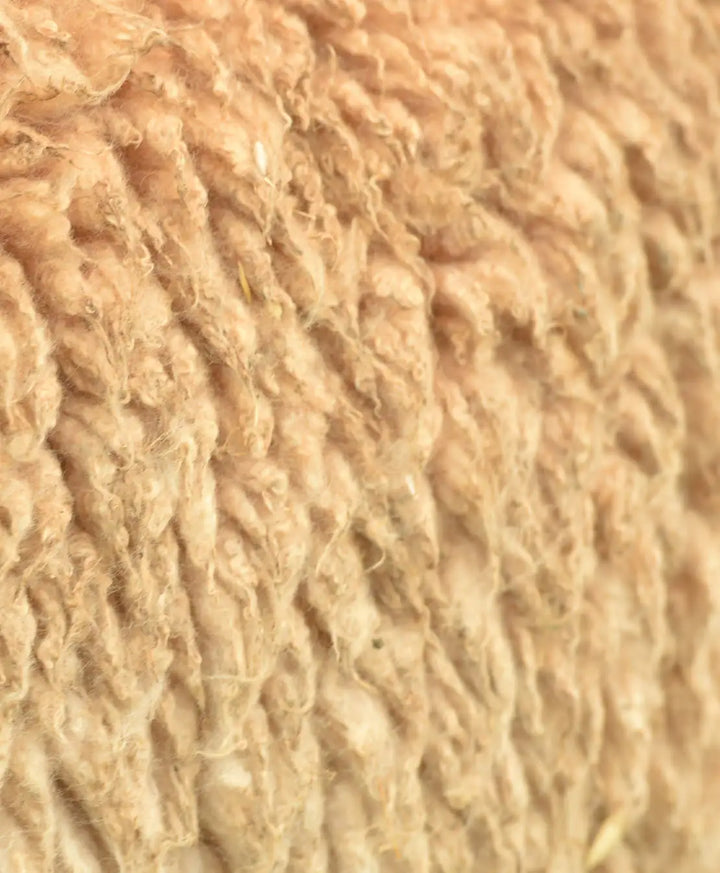



In the vast expanse of nature, every choice we make has an impact. From the trails we tread to the gear we wear, our decisions shape not only our outdoor experience, but the world around us. As stewards of the earth, it's essential to consider the materials that accompany us on our adventures, particularly when it comes to clothing. In the realm of outdoor apparel, natural fibers just make sense. Unlike synthetic counterparts, which often come laden with environmental costs, natural fibers offer a symbiotic relationship with nature. From their biodegradability to their renewable sourcing, natural fibers embody the ethos of sustainability that resonates with outdoor enthusiasts worldwide. However, this can't come at the expense of function. Thankfully, with the two ultimate natural fibers in the outerwear industry - alpaca fiber and merino wool - there's no question about their remarkable performance. Today, we embark on an exploration of these two extraordinary natural fibers. While each boasts its own set of unique qualities and benefits, both share a common thread of excellence in performance and comfort. Here, we’ll delve into the nuances of these extraordinary materials, celebrating their contributions to the world of outdoor apparel while uncovering the distinct advantages they offer to adventurers of all kinds.
Alpaca Fiber:
Originating from the majestic Andean alpaca, alpaca fiber embodies the rich heritage and rugged nature of the high-altitude regions of South America. There the rugged landscapes and temperate climate have shaped the evolution of alpacas and their extraordinary fiber. Revered by indigenous peoples for its remarkable softness and insulating properties, alpaca fiber has played a pivotal role in the textile traditions of the Andean cultures for millennia. However, despite its exceptional qualities, alpaca fiber has remained considerably elusive to other regions of the world as it remains a challenging material to obtain, requiring careful knowledge of fiber and farming to harness its full potential.




Merino wool
In contrast, merino wool comes from the merino sheep of New Zealand, carefully bred for producing the finest wool fibers. Renowned for its fine texture and superior warmth compared to non-merino wool, merino wool has garnered global acclaim as a staple material in outdoor apparel. Notably, the United States Army has invested in the development of merino wool fabrics, recognizing its warmth and performance in extreme conditions. Unlike alpaca fiber, merino wool can be farmed in various regions worldwide, including the United States, making it more accessible for mass production and commercial use.








Softness:
When comparing the softness of natural fibers, we primarily consider fiber diameter. However, in the case of alpaca fiber and merino wool, we also want to consider a few other factors, including crimp, fiber smoothness, and lanolin content. Fiber diameter, measured in microns (μm), refers to the thickness or width of the fiber strand. The finer the fiber diameter, the softer and more luxurious the texture of the fabric it produces. Fibers from a single animal do not all have the same diameter, meaning that fiber must be sorted. Alpaca fiber is renowned for its exceptional softness, thanks to the fine diameter of its fibers. Among the various grades of alpaca fiber, Royal Alpaca stands out for its supreme softness and luxurious feel. Royal Alpaca fibers have an average diameter of less than 19 microns, making them incredibly fine and soft to the touch. Alpaca fibers must undergo a meticulous sorting process to separate them into categories based on their width. Incredibly, each individual fiber is carefully hand-sorted to ensure that only the finest and softest fibers are selected for premium-grade products. This process is done by hand and takes years of knowledge and experience to master, resulting in alpaca garments that offer a next-to-skin feel that is gentle, soothing, and unmatched in softness. Merino wool has the finest diameter of sheep's wool, with a micron range anywhere from 17μm to 25μm. While Merino wool is also prized for its softness, the diameter of the fibers can vary depending on the specific breed of sheep and the processing methods used. Unlike alpaca fiber, which requires hand sorting for premium grades like Royal Alpaca, Merino wool fibers are typically sorted by machines that can detect and separate fibers based on their diameter and quality. However, even with automated sorting processes, achieving the same level of consistency and softness as Royal Alpaca is difficult.




Some other factors to consider have to do with the overall smoothness of the fiber; this comes from crimp and the surface of the fiber. Overall, Merino wool typically has a higher degree of crimp; this crimp is how Merino wool maintains its loftiness and elasticity along with its thermoregulating qualities. Alpaca, on the other hand, has a more minimal crimp, resulting in a sleeker and smoother touch. The surface of the fiber also impacts the feel of the fibers. Both fibers have microscopic scales that protrude from the surface of the fiber; this helps with moisture-wicking; however, the shape of the scales differs between wool and alpaca. The scales on alpaca fibers are smaller and lie flat against the surface of the fiber, resulting in a smooth texture that minimizes the prickly sensation that is sometimes caused by the larger and overlapping scales on the surface of merino wool, which can occasionally cause some itchiness.




The final important factor to consider beyond just feeling the fibers for yourself is that Merino wool contains lanolin, a natural oil produced by Merino sheep as a protective coating for their wool fibers. Lanolin can vary in concentration depending on factors such as the breed of sheep, the processing methods used, and the cleanliness of the wool. While lanolin helps to provide natural moisture resistance and durability to Merino wool, it can also contribute to skin irritation and itchiness, especially for individuals with sensitive skin or lanolin allergies. Alpaca fiber is naturally lanolin-free, meaning you need to use fewer harsh chemicals in the washing process, and it is generally considered hypoallergenic, making it the softer option for those with sensitive skin.




Thermal Efficiency:
Both merino wool and alpaca fiber retain warmth through air pockets but by different mechanisms. Alpaca fiber is renowned for its exceptional warmth, thanks to its unique hollow core structure. This hollow core allows alpaca fiber to trap warm air efficiently, providing superior insulation against cold weather conditions. The natural insulating properties of alpaca fiber make it highly effective at retaining body heat while still allowing moisture to evaporate, keeping you warm and dry in varying climates. Additionally, alpaca fiber is lightweight and breathable, ensuring that you stay comfortable and cozy without feeling overheated or bulky.
The insulating properties of Merino wool depend on its natural crimps. While its structure does offer warmth, it isn’t as efficient at trapping heat as alpaca fiber without the hollow core. In fact, alpaca fiber is 20% more thermally insulating than merino wool, thanks to the fibers' evolutionary construction allowing them to trap heat efficiently while remaining lightweight and breathable, ensuring optimal comfort and insulation in cold weather conditions.
Durability:
In the realm of natural fibers, both alpaca fiber and merino wool are esteemed for their durability. While the lanolin in merino wool helps support its elasticity, it may be more prone to pilling and stretching over time, particularly in high-friction areas or with frequent use. Studies comparing the tensile strength of alpaca fiber and merino wool have shown that alpaca fiber exhibits higher tensile strength, 50 N/ktex compared to 30-40 N/ktex of merino wool, and greater resistance to stretching and tearing. This enhanced strength and resilience make alpaca fiber garments more durable, maintaining their shape and integrity even after repeated wear and laundering.




Additionally, alpaca fiber's natural elasticity contributes to its longevity, allowing garments to retain their shape and bounce back from stretching without losing their structural integrity. This resilience to wear and tear makes it a standout choice for individuals seeking garments that can withstand the rigors of daily wear and use.
Moisture Wicking:
Both alpaca fiber and merino wool are known for their moisture-wicking properties, but in general, alpaca fiber tends to be slightly more moisture-wicking compared to merino wool.
Alpaca fiber has a smoother surface and a hollow core structure, which allows it to absorb moisture more efficiently and release it into the air, promoting faster evaporation and maintaining a dry microclimate next to the skin.
Merino wool also has excellent moisture-wicking capabilities and can absorb a significant amount of moisture without feeling wet. However, some users may find that merino wool garments feel slightly damp or clammy during intense physical activities, especially if the moisture buildup exceeds the wool's capacity to absorb and release it efficiently. While merino wool absorbs about 30% of its weight in water, alpaca fiber only absorbs about 10-11%. That means alpaca dries faster and insulates better than merino when wet.
Overall, while both alpaca fiber and merino wool offer effective moisture-wicking properties, alpaca fiber outperforms merino wool in terms of moisture management and breathability, making it a preferred choice for activewear and outdoor apparel, especially in humid or sweaty conditions.
The insulating properties of Merino wool depend on its natural crimps. While its structure does offer warmth, it isn’t as efficient at trapping heat as alpaca fiber without the hollow core. In fact, alpaca fiber is 20% more thermally insulating than merino wool, thanks to the fibers' evolutionary construction allowing them to trap heat efficiently while remaining lightweight and breathable, ensuring optimal comfort and insulation in cold weather conditions.
Breathability:
Similar to the thermal efficiency of both alpaca and merino wool, both fibers offer breathability, but through different mechanisms. The crimped structure of merino wool fibers creates air pockets in the fabric, promoting airflow and aiding in temperature regulation. Whereas alpaca fiber, prized for its natural breathability, which comes from the hollow core structure of alpaca fiber allowing air to circulate freely through the fiber itself. Additionally, alpaca fiber's smooth surface and natural elasticity contribute to its breathability, allowing for unrestricted movement and airflow. While alpaca fiber offers more breathability, both fibers are suitable for a wide range of climates and activities, from chilly mountain hikes to warm-weather adventures.




Odor Resistance:
Both merino wool and alpaca fiber boast natural antimicrobial properties, making them inherently resistant to odors. Both fibers contain keratin—a protein that helps form the fiber structure. Keratin is naturally antimicrobial, helping to inhibit the growth of odor-causing bacteria. Additionally, Merino wool contains lanolin, a natural wax produced by sheep, which exhibits antimicrobial properties. This lanolin acts as a protective barrier on the wool fibers, inhibiting the growth of odor-causing bacteria. However, Merino wool is not as effective at inhibiting bacterial growth as alpaca fiber. Some users may find that merino wool garments develop odors more quickly, especially with prolonged wear or in humid environments. Alpaca fiber, on the other hand, harbors fewer bacteria compared to merino wool, thanks to alpaca fiber's smooth surface and hollow core structure creating an environment less conducive to bacterial growth, further enhancing its odor-resistant properties. Consequently, alpaca fiber emerges as the preferred choice for individuals seeking odor-resistant and low-maintenance apparel suitable for a variety of activities and climates.
Sustainability:
Merino wool and alpaca represent sustainable alternatives to synthetic fibers like polyester and nylon. Unlike synthetics, which release microplastics into the environment and are not biodegradable, merino wool and alpaca fibers are renewable resources that decompose naturally. Merino sheep, responsible for merino wool production, typically graze in extensive systems that support ecosystem health. However, concerns exist about land use, water consumption, and chemical use in merino wool production. In contrast, alpacas, native to the Andes, have minimal environmental impact due to their gentle grazing habits and efficient resource use. Alpaca fiber production involves low-intensity, extensive grazing systems and requires less water and land compared to other livestock. Furthermore, alpaca fiber is renewable, cruelty-free, and biodegradable, offering a more sustainable option for clothing.
Additionally, the cleaning process for alpaca fiber requires fewer harsh chemicals compared to merino wool due to the absence of lanolin, making it even more environmentally friendly. While both merino wool and alpaca fiber have sustainability benefits, alpaca fiber may have a slight edge due to its efficient resource use and renewable nature. It's crucial to consider factors like farming practices and supply chain transparency when evaluating the sustainability of fibers.




Wear Nature
In the realm of outdoor apparel, the choice between synthetic and natural fibers is clear. Natural fibers like alpaca and merino wool offer both sustainability and performance. Alpaca's exceptional warmth and softness, coupled with its gentle environmental footprint, make it an enticing choice. Meanwhile, merino wool's enduring legacy and proven performance stand as testaments to its resilience. Both fibers embody a harmonious balance between sustainability and functionality, offering adventurers the best of both worlds. As we venture outside, let’s reach for the warmth and wisdom of natural fibers that not only shield us from the elements but also deepen our connection to the world around us.
